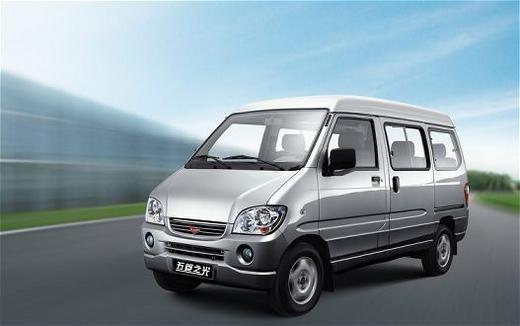
A minivan produced by joint venture SAIC-GM-Wuling. Statistics from the China Association of Automobile Manufactures show that first-half sales of crossover passenger vehicles including minivans this year surpassed 1.3 million units, nearly 43 percent growth over the first six moths of 2009.
Beijing Automotive Industry Holding Corp (BAIC), Daimler AG and Hyundai Motor's partner in China, recently announced plans to expand its presence at the opposite end of the market - by producing and selling more minivans.
A recent agreement between BAIC and motorcycle maker Chongqing Yinxiang Group outlined plans for a minivan plant in Hechuan district of Chongqing with a first-phase investment of 1.5 billion yuan. It will have an initial capacity to make 300,000 minivans annually.
It is not the first time BAIC, China's fifth-largest automaker by sales, entered the minivan business. It has an existing plant that can make 200,000 minivans yearly in central China's Hunan province.
"Driven by great demand in China's medium and small-sized cities and in rural areas, the minivan market has bright prospects," said a public relations official for BAIC. "Developing the minivan market is now top of the agenda at BAIC," he said.
Shining performance
Statistics from the China Association of Automobile Manufactures show that first-half sales of crossover passenger vehicles including minivans this year surpassed 1.3 million units, nearly 43 percent growth over the first six moths of 2009.
Minivan models have already shown what great influence they have on the overall market.
Shanghai Automotive Industry Corp (SAIC) ranked first in sales last year largely due to the performance of its minivan unit SAIC-GM-Wuling.
The nation's sixth-largest automaker Guangzhou Automobile Group Co joined the fray in April with its joint venture Guangqi Gonow to produce minibuses.
Among the top six Chinese automakers, BAIC is the last to enter the minivan market.
Auto analysts said BAIC could fall from the top five if it doesn't move into the minivan segment.
Overcapacity risks
Among the 1.95 million minivans sold last year, more than half were made by SAIC-GM-Wuling, which produced more than 1 million units.
Next was Chang'an Automobile Group with minivan sales of 700,000 units. The two companies now account for almost 80 percent of the entire market.
First Auto Works - also one of the largest domestic automakers - announced in June that it will build a minivan plant with a yearly capacity of 400,000 units in Jilin province.
Even though the rush is on, some experts warn that overheated competition in the segment could lead to the big becoming bigger, while smaller producers could end up with nothing.
Xu Changming, director of the economy consultation center of the State Information Center, said the minivan market is already at risk of overcapacity.
Another researcher, Zhu Yanhui with Aijian Securities, said overcapacity is not likely to be a problem in the short term because present production is far short of demand.
Yet he said over the long term the problem will become obvious.
As well, minivans compete with other light vehicles like pickups. As farmers' incomes rise, they have options for more models and minivans are not the first choice for many.
In 2009, minivans sales in rural areas surged, partly due to central government stimulus policies. The incentives will expire this year, making prospects even tougher for newcomers.





